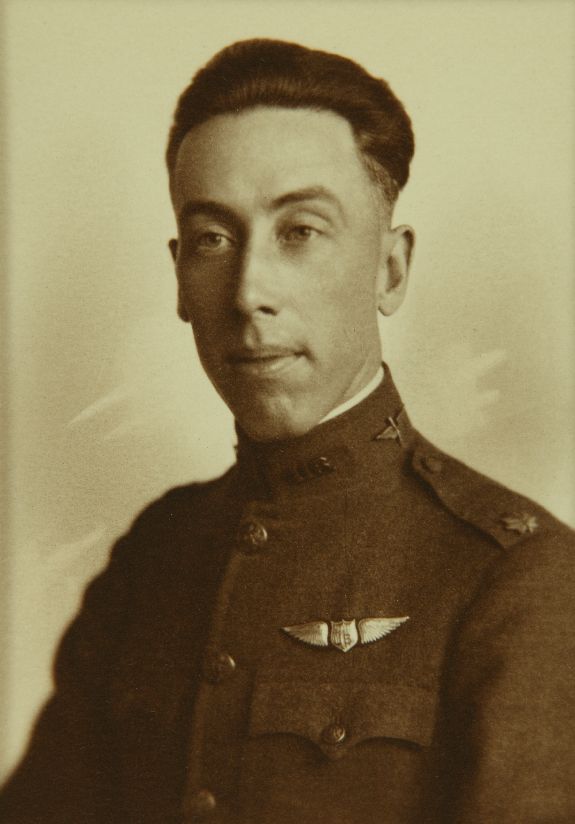
27 February 1920: Major Rudolph William Schroeder, Chief Test Pilot of the Engineering Division, McCook Field, Ohio, flew a Packard Lepère L USA C.II biplane to a Fédération Aéronautique Internationale (FAI) World Record Altitude of 10,093 meters (33,114 feet).¹ The biplane was powered by a turbosupercharged Liberty L-12 aircraft engine producing 443 horsepower.
There are differing accounts of what occurred during the flight. One report is that the L USA C.II created the very first contrail as it flew at altitudes and temperatures never before reached. Also, there are differences in explanations of some type of problem with Major Schroeder’s oxygen supply. A valve may have frozen, the regulator did not operate correctly, or one of his tanks was empty. Another source says that he ran out of fuel. But he apparently suffered hypoxia and began to lose consciousness. He may have lost control, or intentionally dived for lower altitude. The airplane dived nearly 30,000 feet (9,144 meters) before Schroeder pulled out and safely landed. He was in immediate need of medical attention, however.
Recording instruments indicated that he had been exposed to a temperature of -67 °F. (-55 °C.). His goggles had iced over, and when he raised them, his eyes were injured by the severe cold.
Schroeder’s barograph recorded a peak altitude of 37,000 feet (11,277.6 meters). When the device was calibrated after landing, it indicated that his actual maximum altitude was 36,020 feet (10,979 meters).
The Fédération Aéronautique Internationale (FAI) delegated responsibility for certifying the record to the Aero Club of America, whose representatives apparently felt that procedures for setting the record had not been correctly followed, and declined to accept the altitude record.
The National Bureau of Standards next evaluated the data and credited Rudolph Schroeder with having reached 33,180 feet (10,113 meters). Regardless, the current official record altitude, according to FAI, remains 10,093 meters (33,114 feet).
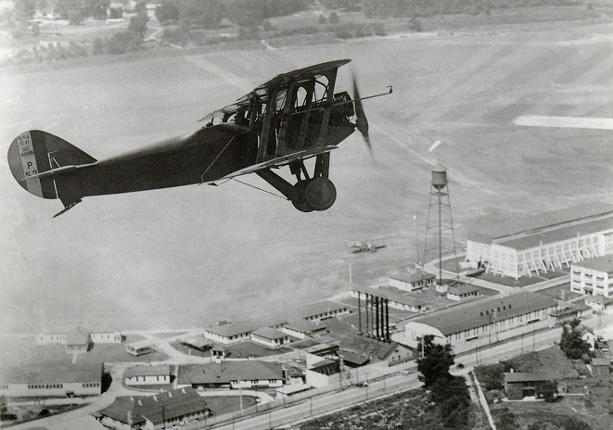
The Packard Lepère L USA C.II was a single-engine, two-place biplane fighter which was designed by the French aeronautical engineer, Capitaine Georges Lepère, who had previously designed the Section Technique de l’Aeronautique Dorand AR.1 reconnaissance airplane for France’s military air service. The new airplane was built in the United States by the Packard Motor Car Company of Detroit, Michigan. It was a two-place fighter, or chasseur, light bomber, and observation aircraft, and was armed with four machine guns.
The L USA C.II was 25 feet, 3-1/8 inches (7.699 meters) long. The upper and lower wings had an equal span of 41 feet, 7¼ inches (12.681 meters), and equal chord of 5 feet, 5¾ inches (1.670 meters). The vertical gap between the wings was 5 feet, 1/8-inch (1.527 meters) and the lower wing was staggered 2 feet, 15/16-inch (0.633 meters) behind the upper wing. The wings’ incidence was +1°. Upper and lower wings were equipped with ailerons, and had no sweep or dihedral. The height of the Packard Lepère, sitting on its landing gear, was 9 feet, 7 inches (2.921 meters).
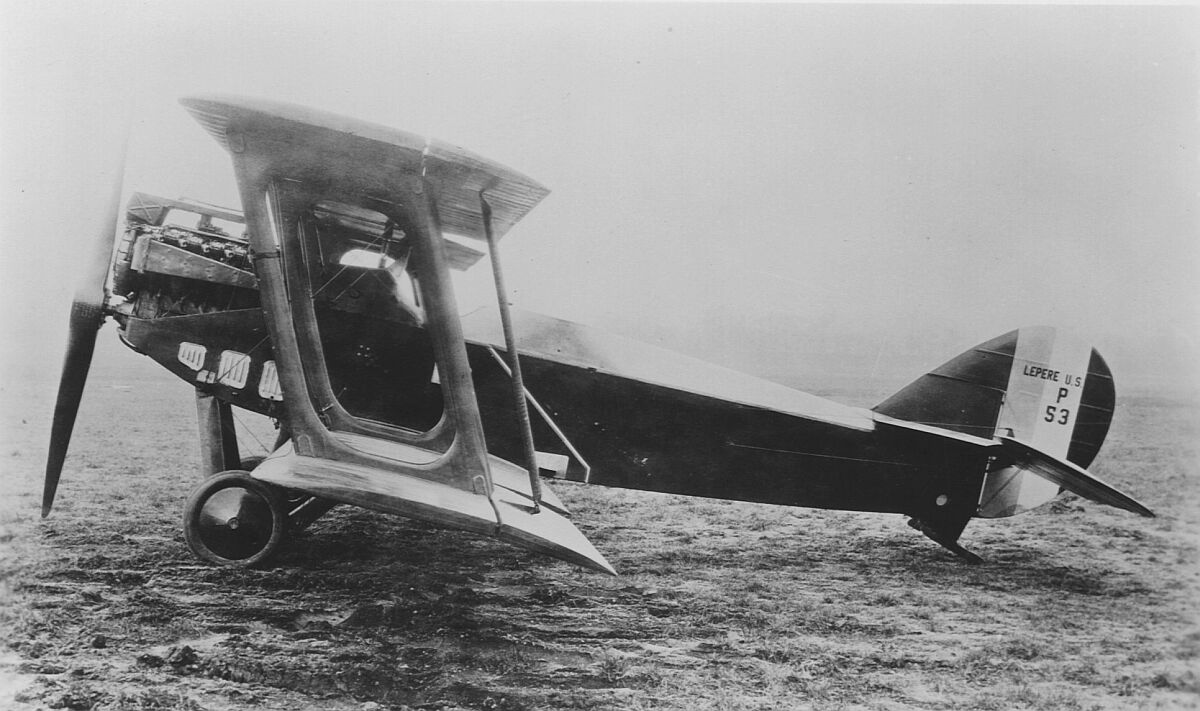
The fuselage was a wooden structure with a rectangular cross section. It was covered with three layers of veneer, (2 mahogany, 1 white wood) with a total thickness of 3/32-inch (2.38 millimeters). The fuselage had a maximum width of 2 feet, 10 inches (0.864 meters) and maximum depth of 4 feet, 0 inches (1.219 meters).
The wings were also of wooden construction, with two spruce spars and spruce ribs. Three layers of wood veneer covered the upper surfaces.
The Packard Lepère had an empty weight of 2,561.5 pounds (1,161.9 kilograms) and its gross weight was 3,746.0 pounds (1,699.2 kilograms).
The Packard Lepère was powered by a water-cooled, normally-aspirated, 1,649.34-cubic-inch-displacement (27.028 liter) Packard-built Liberty 12 single overhead cam (SOHC) 45° V-12 engine, which produced 408 horsepower at 1,800 r.p.m., and drove a two-bladed, fixed-pitch propeller with a diameter of 9 feet, 10 inches (2.997 meters). The Liberty 12 was 5 feet, 7.375 inches (1.711 meters) long, 2 feet, 3.0 inches (0.686 meters) wide, and 3 feet, 5.5 inches (1.054 meters) high. It weighed 844 pounds (383 kilograms).
The engine coolant radiator was positioned horizontally in the center section of the airplane’s upper wing. Water flowed through the radiator at a rate of 80 gallons (303 liters) per minute.
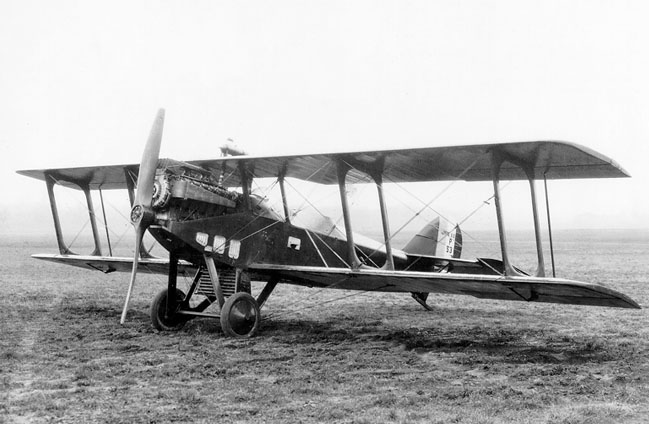
The L USA C.II had a maximum speed of 130.4 miles per hour (209.9 kilometers per hour) at 5,000 feet (1,524 meters), 127.6 miles per hour (205.4 kilometers per hour) at 10,000 feet (3,048 meters), 122.4 miles per hour (197.0 kilometers per hour) at 15,000 feet (4,572 meters), 110.0 miles per hour (177.0 kilometers per hours) at 18,000 feet (5,486 meters) and 94.0 miles per hour (151.3 kilometers per hour) at 20,000 feet (6,096 meters). Its cruising speed was 112 miles per hour (180 was kilometers per hour). The airplane could climb to 5,000 feet in 4 minutes, 24 seconds, and to 20,000 feet in 36 minutes, 36 seconds. In standard configuration, the LUSAC 11 had a service ceiling of 20,200 feet (6,157 meters). Its range was 320 miles (515 kilometers).
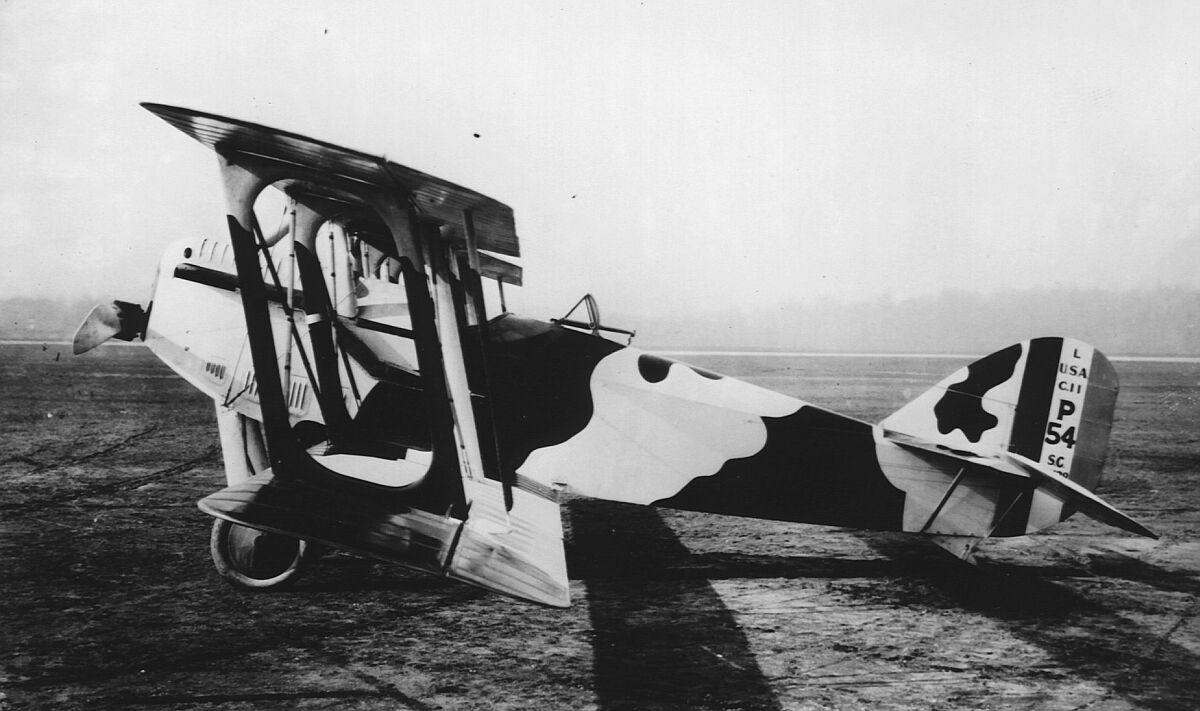
Armament consisted of two fixed M1918 Marlin .30-caliber machine guns mounted on the right side of the fuselage, synchronized to fire forward through the propeller arc, with 1,000 rounds of ammunition, and two M1918 Lewis .30-caliber machine guns on a flexible mount with 970 rounds of ammunition.
The Air Service had ordered 3,525 of these airplanes, but when the War ended only 28 had been built. The contract was cancelled.
The only Packard Lepère L USA C.II in existence, serial number A.S. 42133, is in the collection of the National Museum of the United States Air Force, Wright-Patterson Air Force Base, Ohio.
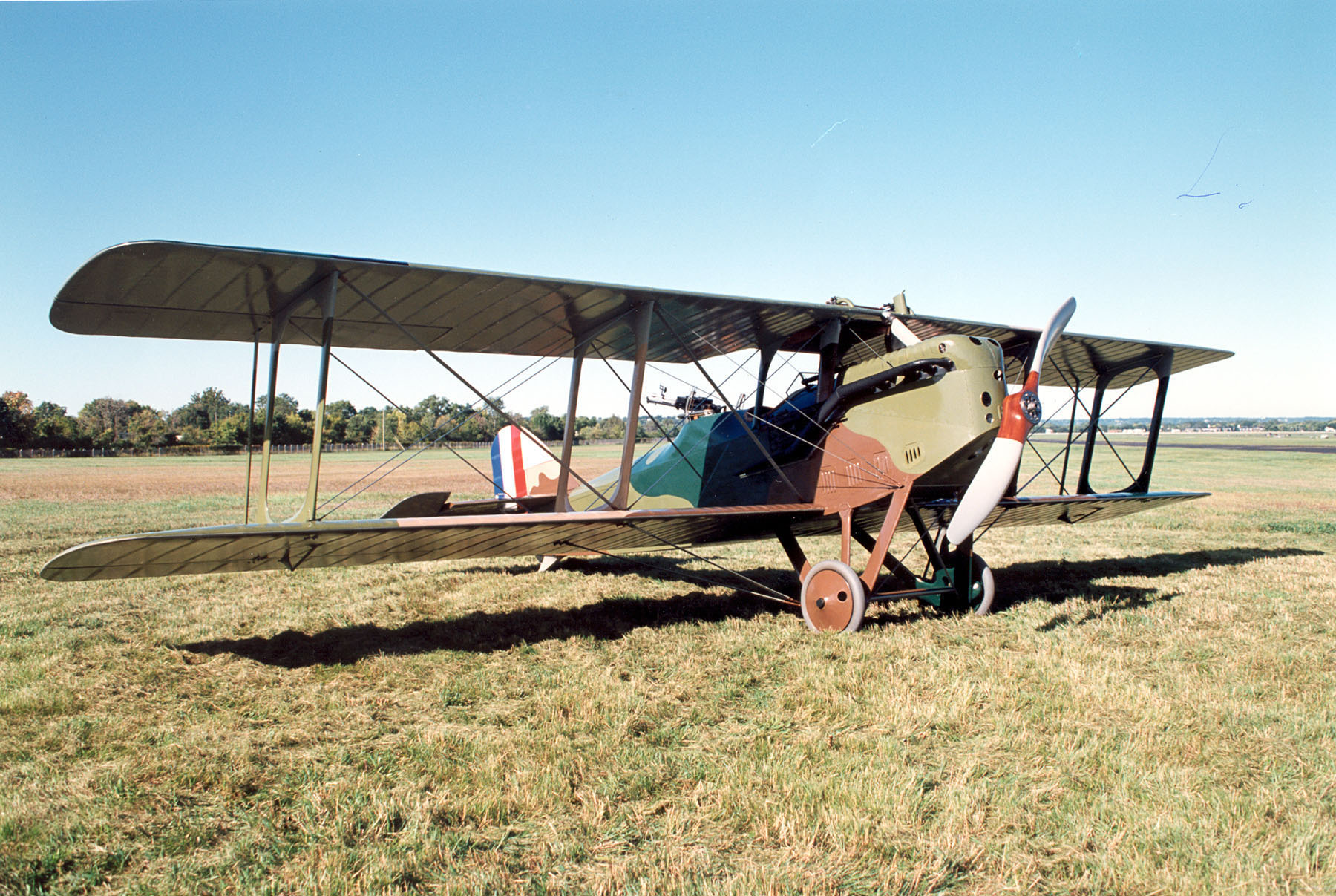
¹ FAI Record File Number 8229: 10 093 m (33,114 feet)
© 2018, Bryan R. Swopes
What is a turbosupercharged engine?
Graham, a turbosupercharged engine (often shortened to “turbocharged”) is an engine which has its manifold pressure increased (“boosted”) by a supercharger which is driven by a turbine in the exhaust flow. This airplane was used to test turbochargers, which were a new development.
I love these little engineering stories, of sorts, that are a part of engineering development history of engines. They fill in the gaps of knowledge when I always ask myself “I wonder how/when/why…” etc. Its always a bit frustrating when I can’t “like” one of these articles when I read one that satiates the curiosity I didn’t know was there and adds to my useless knowledge base. 🙂 But alas, this is not a social media website (probably a good thing!) 😉
So here I am.
Thanks for this!